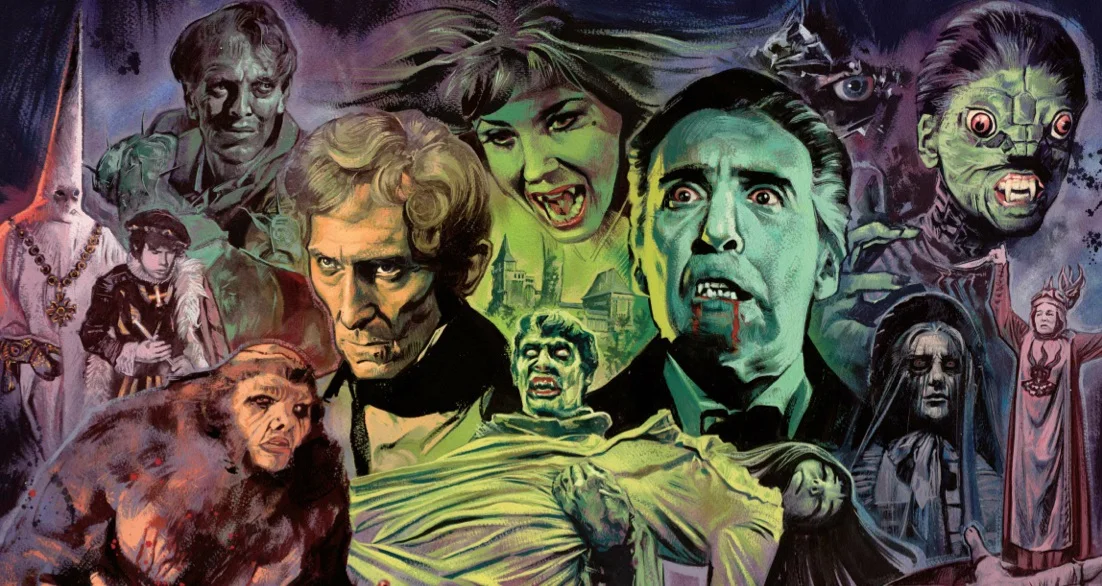A few years back, I wrote a list of 10 underrated Hammer Horror films to watch throughout October and the Halloween period. Now, a few years later, I’ve seen a lot more — mainly ones that people don’t always look favourably on. But in these movies listed below, there are some brilliant moments and themes and films that show just how creative the creators at Bray Studios were — here for you to enjoy over the dark winter months. (Or whenever: Hammer is for life, not just Halloween!)
1. Captain Kronos: Vampire Hunter (1974)
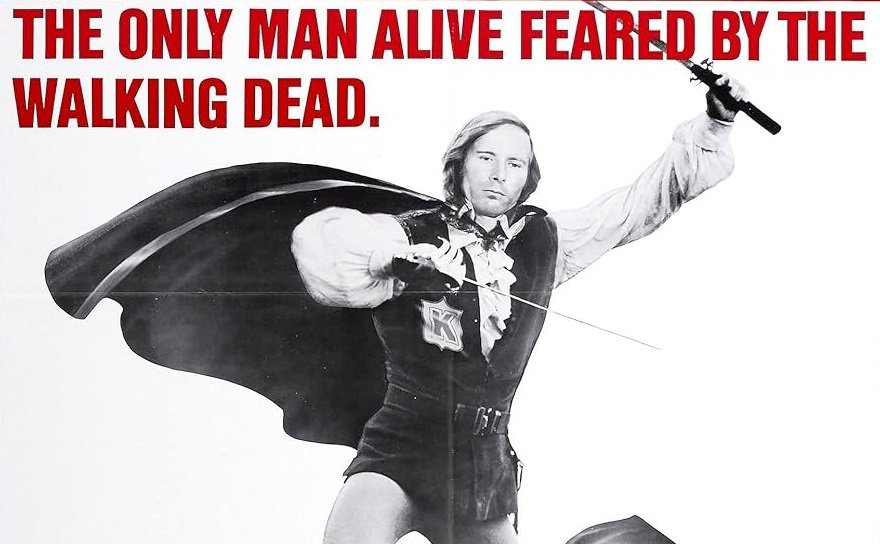
Captain Kronos manages to successfully blend Hammer vampires with the swashbuckling feel of some of their earlier non-traditional horror films. Dr. Marcus has to call Captain Kronos — an old army friend — to his home to investigate a number of deaths related to rapid aging. It doesn’t take Kronos and his aide Grost long to discover a family of vampires who are draining the life from their victims to prolong their own.
Seen as a successful release at the time, Captain Kronos has also gone to become a cult classic amongst fans of the horror genre, thanks to its mixture of frights and swashbuckling action. Written and produced by the creators of The Avengers, Brain Clemens and Albert Fennell, it featured a number of stars including one of the original Avengers, Ian Hendry, as well as actors Caroline Munro, John Carson, and Wanda Ventham, with Horst Janson as Kronos, though Julian Holloway provides the voice for the character.
Kronos was supposed to herald a new franchise for Hammer that never happened with the studios closing down after its release but it’s been revived in novels and a series of comics from Titan. Thanks to its cult status, like the vampires he fights, Captain Kronos never really dies.
2. The Quiet Ones (2014)
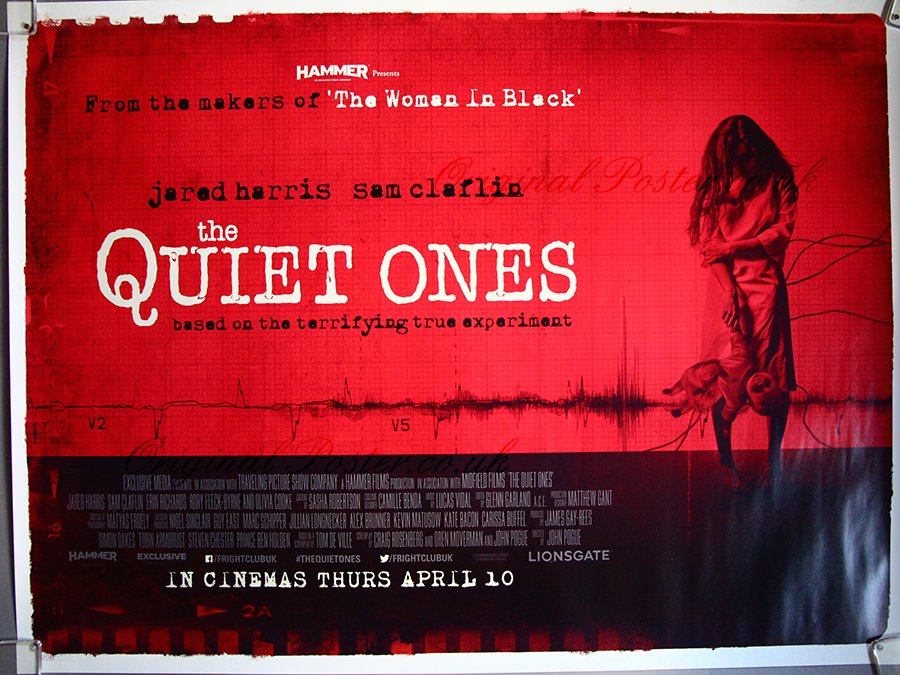
Hammer had made a big comeback a few years prior to The Quiet Ones: films like Let Me In (2010), The Resident (2011), and The Woman in Black (2012) had brought them back as a big player in the horror genre. The Quiet Ones took its inspiration from a real life experiment in the paranormal field, The Philip Experiment, which was designed to see if people can communicate with fictionalised ghosts through the human will. Basically, do we bring things into existence through our sheer force of will and word of mouth or is there a real spirit world waiting for us?
The Quiet Ones, filmed primarily in the house used for Day of the Daleks, sees Professor Joseph Coupland having his university funding pulled on his experiment so he takes his students to a big house in the country to secretly continue his project. One of his students, who suffers from a psychological disorder, begins to see Evie and while the Professor continues his unethical experiments (despite his students pleas to stop), they discover that Evie is more real than they first thought.
The Quiet Ones is a creepy and often uncomfortable watch. It’s hard to see how the Professor treats his students and the cast put in great performances. Of course, one of the main highlights is seeing Styles’ House, even if it does look rundown as if the explosion at the end of Day of the Daleks were a real one. If The Quiet Ones proves anything, it’s that Hammer can still deliver the scares, even if it does still sometimes rely a little too hard on its past glories.
3. Dr Jekyll and Sister Hyde (1971)

The early 1970s saw the earlier quality of Hammer beginning to slip. However, there were a few instances where real inspiration struck; one such film was Dr Jekyll and Sister Hyde, which was the studios’ third take on the famous story from Robert Louis Stevenson. We’ve got Dr Jekyll creating a potion that unleashes a darker force within him. This time though, Dr Jekyll, played by Ralph Bates, turns into Sister Hyde, played by Martine Beswick, and the film is helped by the fact that the pair look alike.
And while the original novel poses the question of who is worse, Dr Jekyll or Mr Hyde, the script makes it pretty clear for most of it: Sister Hyde is certainly trouble, but she’s only killing those who have wronged her and Dr Jekyll. For modern audiences, there are plenty of LGBT+ themes. But amongst other elements of the film, which somehow manage to incorporate Jack the Ripper and body snatchers Burke and Hare, any LGBT+ themes don’t get much exploration.
Despite being one of their later works, Dr Jekyll and Sister Hyde is an inspired movie, taking the original text and doing something wholly original with it. Credit must go to the director too, who stops things from being gloriously over the top, playing the movie straight for the most part; and as good as Bates is in this, Beswick steals the show.
4. The Evil of Frankenstein (1964)
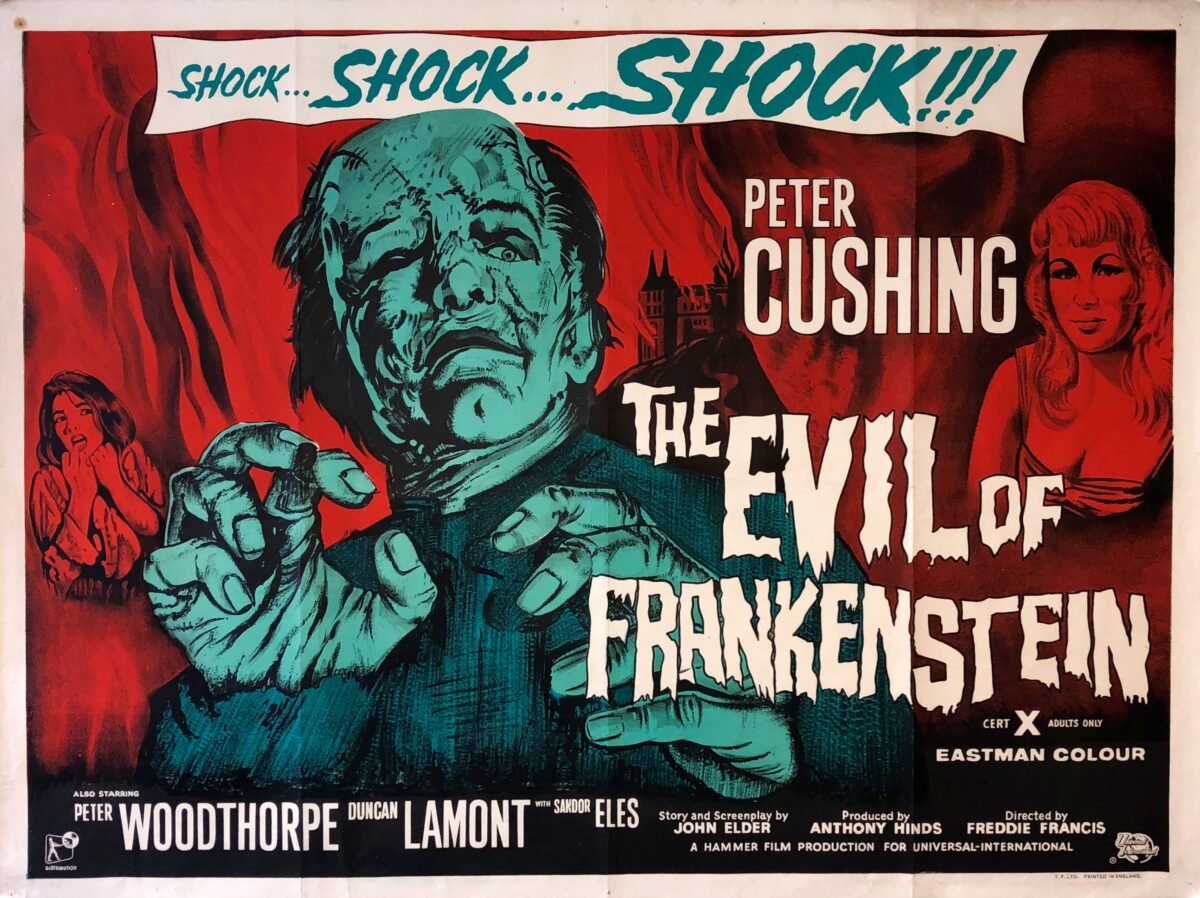
The Evil of Frankenstein is the third movie in the Frankenstein franchise and breaks ties with the continuity of the first two, crafting a completely new background and history for our favourite Baron, played once again by Peter Cushing. When Baron Frankenstein and his assistant Hans have to leave their new house and return to Karlstaad, the Baron’s original home, they decide to sell some of the castle’s antiques to make enough money to continue their experiments. However, they find their castle ransacked and are discovered again, forced to flee once more. They take shelter in a cave where the original monster, having been frozen in ice after the altered climax of 1957’s Curse of Frankenstein.
The new origins have more in common with the 1930s Boris Karloff films and one wonders why Hammer felt the need to reinvent the Creature’s creation, but following an encounter with a magician called Zoltan, who the Baron uses to help the Creature recover while implanting hypnotic suggestions, he finds the Creature has been used in Zoltan’s evil plans. It’s an interesting take on the Baron who finds himself the victim of someone else’s machinations this time around, as Zoltan gains more and more power.
But the film belongs to Peter Cushing who gives a stellar performance as Baron Frankenstein as he is forced to pit his wits against Zoltan to save not only his reputation but also his home of Karlstaad. While we’re a few years away from Frankenstein Created Woman, which sees the Baron actually having to face up to the consequences of his actions, the seeds for that are planted here, posing the question of whether or not Baron Frankenstein is a bad as his reputation suggests.
5. The Vampire Lovers (1970)
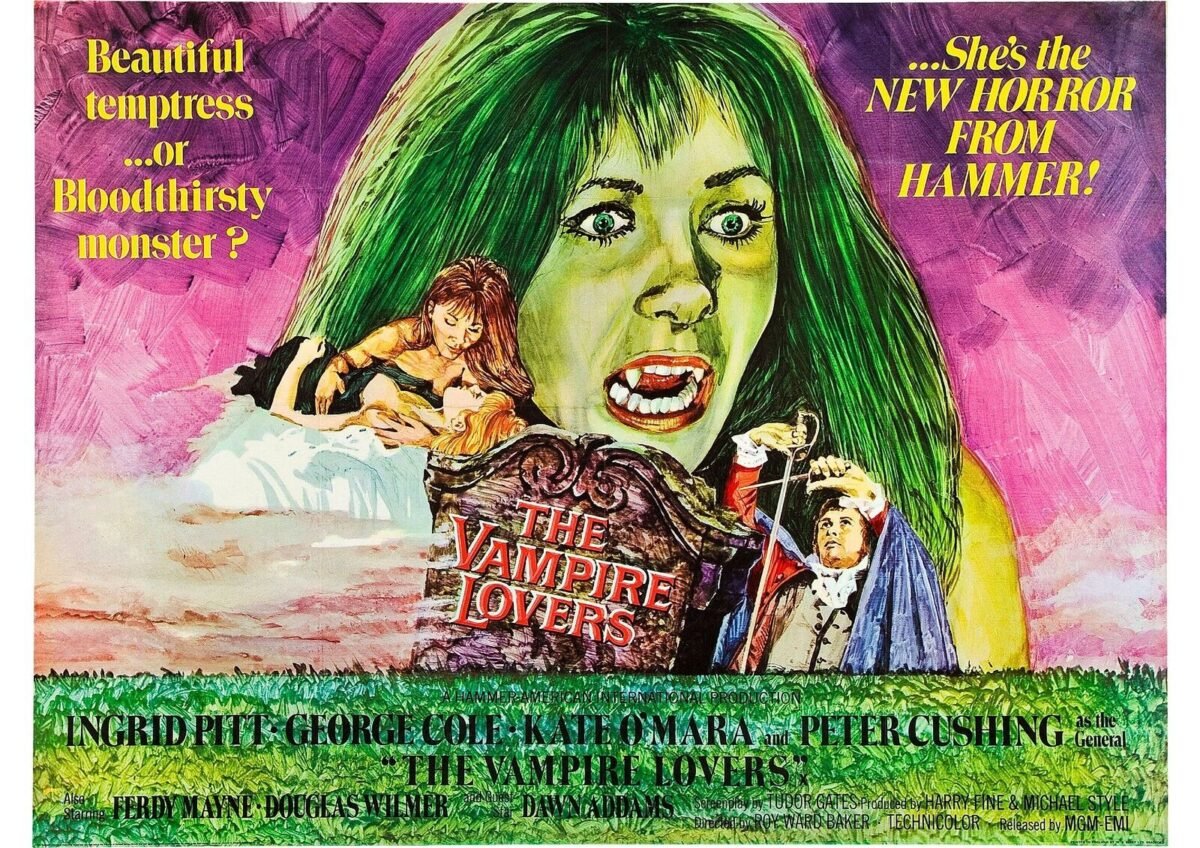
The Vampire Lovers is another example of Hammer in the early 1970s beginning to experiment with their output and trying for something different. Based off Joseph Sheridan Le Fanu’s 1872 novella, Carmilla (an excellent book if you’ve never read it), it begins the Karnstein Trilogy, a series of films focusing on characters from the vampiric Karnstein family — the other films Lust for a Vampire and Twins of Evil are also decent outings and notable for their inclusion of lesbian themes.
On its initial release, The Vampire Lovers was met with mixed reviews: while some people found it flat and boring, other people praised it because it moved away from the older Hammer tropes and focused more on character and world building than blood and gore. It’s for that reason that I really enjoyed it, with Ingrid Pitt’s Carmilla falling in love with her host’s daughter, while drinking the blood of those around her. She also wraps Kate O’Mara’s Governess around her little finger too, leading to a brilliantly staged ending where Carmilla has to choose who she really wants.
Of course, it’s Hammer, so all vampires must be evil, but there are elements in the script where Carmilla is genuinely misunderstood and while some scenes push Hammer’s later mythos of ‘blood and bosoms’, The Vampire Lovers, for the most part, is an intelligently and sensitively written film which makes for a rather chilling if slightly erotic Hammer classic.
6. The Woman in Black (2012)

I first met The Woman in Black when I read the book for my GCSE studies way back in 2010 and since then I’ve both been terrified and in love with the book, originally written by Susan Hill. There had been a previous and frightening ITV adaptation in the 1990s but Hammer seemed like the proper home for The Woman in Black as it plays to all its strengths: there’s a terrific gothic set design and plenty of original twists on the novel — some hated that because they played fast and loose with Hill’s original, but I really like it because it proves that even after they came back Hammer still has it in them to create something genuinely terrifying.
Keeping the titular Woman in Black in the background for most of the movie sees the film pay homage to the fantastic stage play and makes for an unsettling watch as it gives Eel Marsh House a change to be a character in its own right.
My friend, who isn’t bothered by horror films, told me this is the only one he’s seen which genuinely unsettled him and plagued his thoughts long after watching it. Daniel Radcliffe easily sheds the shackles of Harry Potter here as the hero Arthur Kipps, and as good as films like Let Me In were, it’s The Woman in Black which really made Hammer shine, proving they can still make an effective ghost story. There was a sequel, The Angel of Death set during WW2 which was good and featured the late great Helen McCrory, but the 2012 original is easily one of modern Hammer’s best.
7. The Reptile (1966)
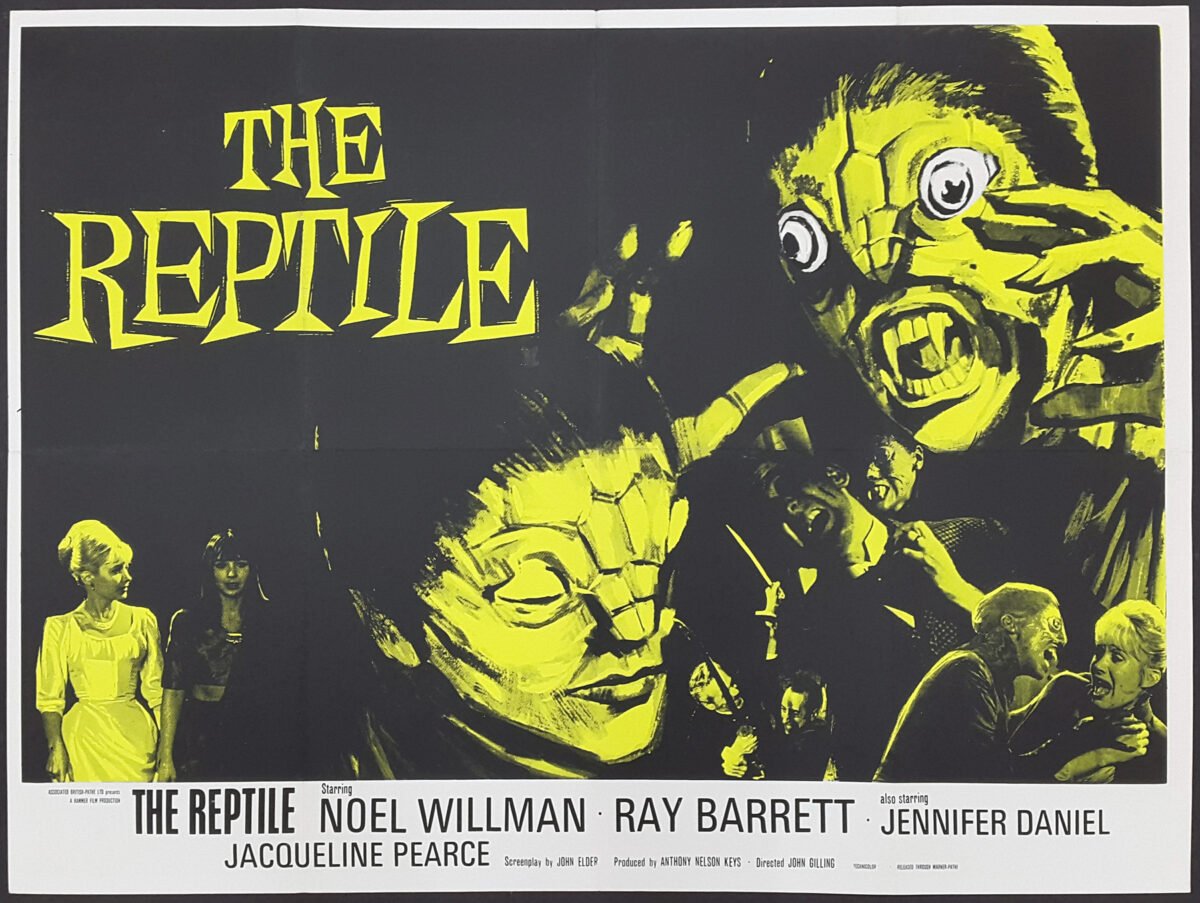
In the mid ’60s, Hammer Horror were really hitting their stride: every movie they made turned into magic and money. The Reptile is no different. Produced off the back of The Plague of the Zombies, it shared the same location, sets, and cast in a cost cutting measure. Despite that, visually The Reptile looks amazing, the sets and locations, with many outside scenes filmed at Frensham Ponds where Doctor Who filmed The Highlanders the same year. Jaqueline Pearce as the titular monster is an instantly iconic Hammer creation and it’s here that the trope of a quiet English village hiding a sinister secret that could kill them all is really cemented.
While it feels a lot slower and moodier than Plague of the Zombies, there are plenty of moments to make the viewer squirm, especially as the reptile venom courses through the blood stream of its victims which even now, nearly 60 years later, looks and feels incredibly visceral. The Reptile ignores Hammer’s previous shocks of blood and gore and is a lot more dignified, observing the idea of self-destruction with a religious man destined to lose his daughter whose fate he wished upon her. It’s an incredibly cerebral film with a iconic monster.
8. The Gorgon (1964)
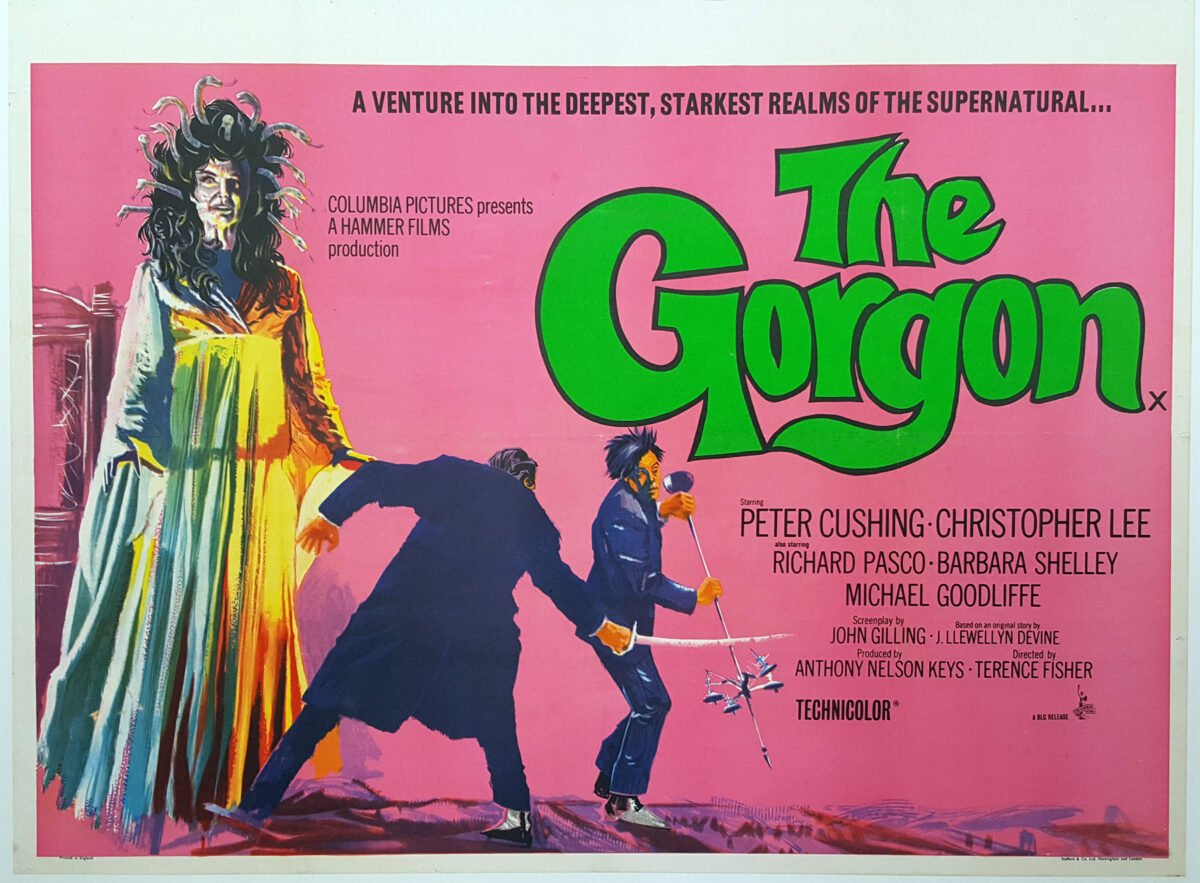
Another reptile here, this time it’s a creature with snakes for hair as Peter Cushing and Christopher Lee come up against The Gorgon. Fans of The Sarah Jane Adventures will see how the story, Eye of the Gorgon, is based off this movie, which drips with atmosphere. Originally submitted as an idea from a Canadian fan, writers John Gilling and Anthony Nelson Keys expanded on the initial notion and developed a script, which saw Hammer hiring a ballet dancer as the Gorgon because it needed to glide as opposed to walk.
The Gorgon has a totally different feel for a Hammer film, as it moved away from Frankenstein, Dracula, and The Mummy franchises, but it looks glorious as the money made from the other films was spent on the set design. While some might find the storyline simple and predicable, especially by modern standards, the visuals are a treat and director, and Hammer stalwart, Terrance Fisher handles things with ease, delivering all the thrills and chills in a way where everyone comes away without egg on their faces. And it’s nice to see Peter Cushing and Christopher Lee getting to portray roles other than those they would become iconic (and in Lee’s case, typecast) for.
9. The Mummy’s Shroud (1967)
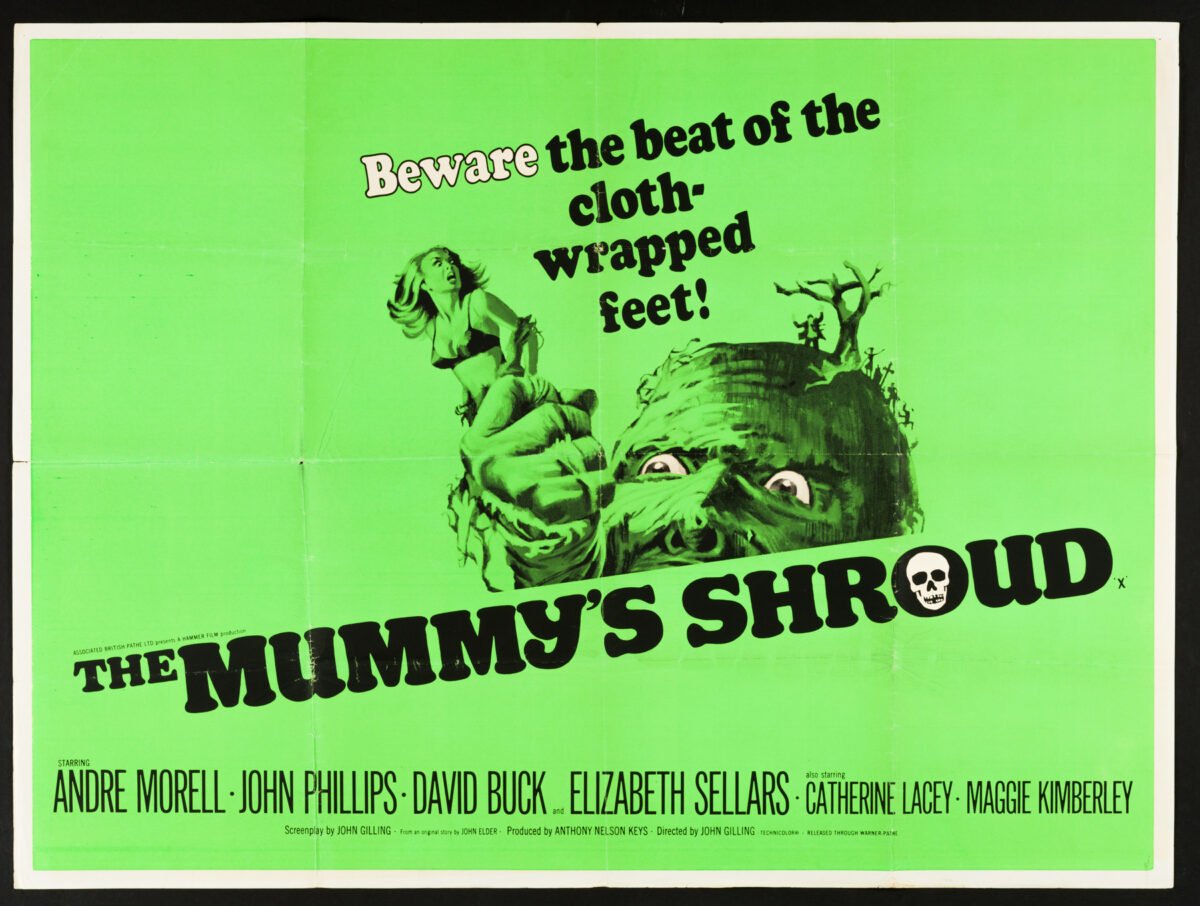
It’s taken me a little while to come around to The Mummy’s Shroud. I first saw it a few years ago on the Horror channel. I wasn’t overly impressed. However, I recently brought the Blu-ray version of the film and got a new appreciation for it. While it doesn’t stray too far from established tropes in other mummy films, The Mummy’s Shroud plays out like a slasher film, with the creature bumping off characters in a variety of ways — strangulation, knifes, acid, and hooks; ways that would make Michael Meyers or Freddie Kruger blush. On its release, some people didn’t like this way of finishing characters off, especially in comparison to The Reptile which gave us kills left to our imagination.
While there is no way of disguising that this is one of Hammer’s lower budget outings, the movie does boast horror icons such as Andre Morell and Michael Ripper in leading roles as well as legendary stunt man, Eddie Powell as the Mummy. Powell would famously break his ankle on the set of Daleks’ Invasion Earth 2150 A.D. and would go on to play the titular Alien in the Ridley Scott films.
And if that weren’t enough, Roger Delgado also features here in a role not too dissimilar to the Master. Was this plot another one of the Master’s plans all along…?
10. Countess Dracula (1971)
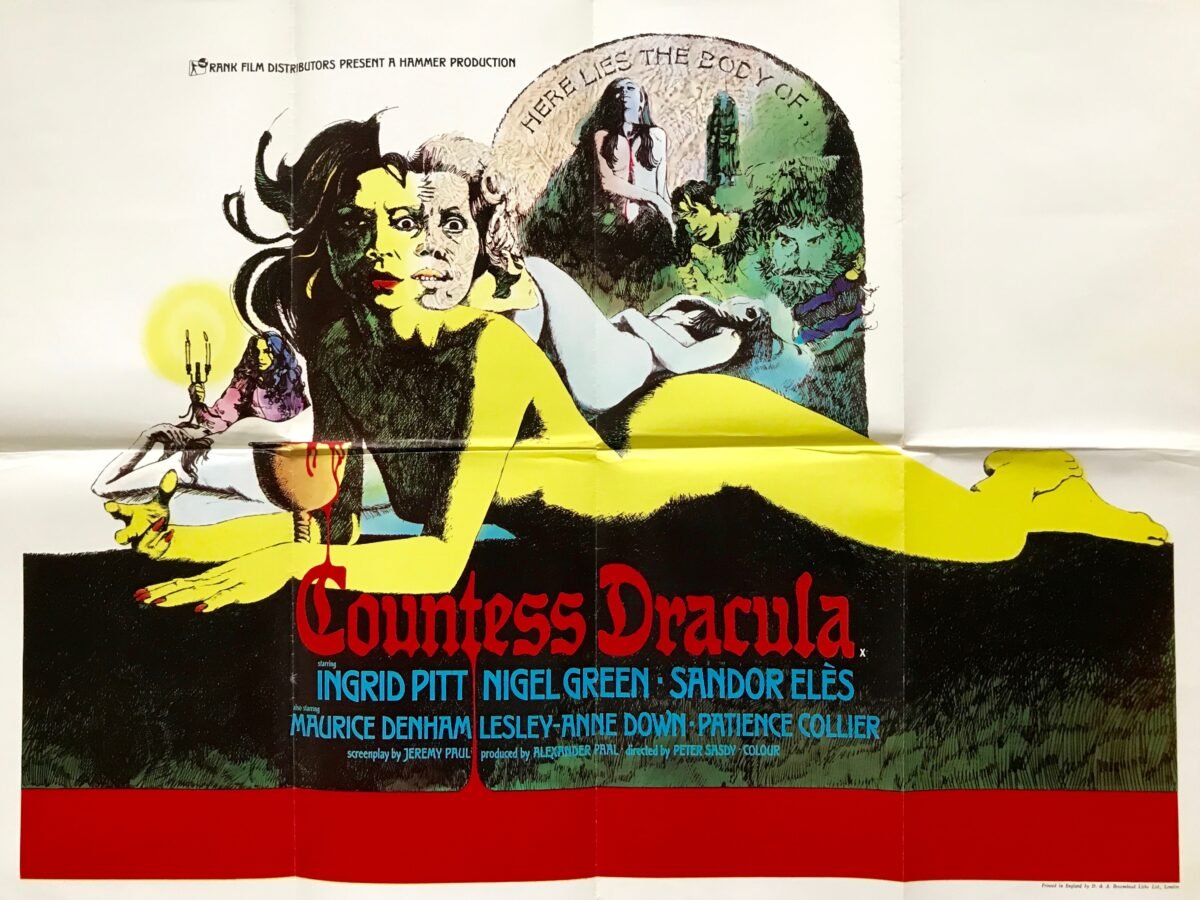
Countess Dracula features a story based on the myths and legends of a real life person, Countess Elizabeth Bathory, a noblewoman who was accused of brutally murdering dozens of young girls and women in her lifetime. If true, then she would be one of the earliest recorded serial killers of all time.
Ingrid Pitt brings the Countess to life, though her voice was dubbed over for not being English enough, despite her real-life counterpart being Hungarian. The Countess hires female staff, and when they displease her, she disposes of them in various gruesome ways and then bathes in their blood to keep herself looking young. Once again, Hammer found a different way of using the vampire legend, rather than just neck biting — no fangs on offer here.
Amongst the literal bloodbaths, there is a story about vanity to be enjoyed here — someone so desperate to stay young forever, that this film still feels relevant in today’s era of anti-aging serums and creams. While we can forgive the ending of the film slowly running out of energy along with the Countess, Pitt does a marvellous job and it’s no wonder that she would play vampires very regularly throughout her career, thanks to her powerful performance here.
Coming out as a blood sucking double bill with Vampire Circus, which would feature future Doctor Who companion Lalla Ward, Countess Dracula doesn’t have the same innovative quality that Circus does, but given how production had to be suspended and the movie made out of the filmed footage with Circus, Countess Dracula revels in its court intrigue and humour, which balances the horror well, making Countess Dracula certainly one of the most underrated films in Hammer’s long dynasty.
Happy Halloween…!
